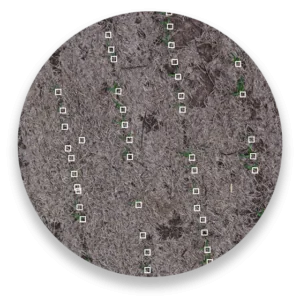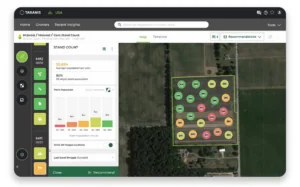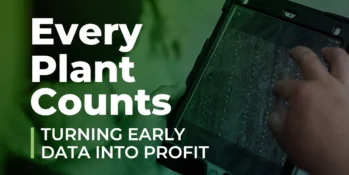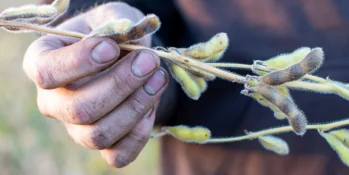

 Getting an accurate picture of your crop’s emergence is one of the most important steps in evaluating yield potential. Yet for many growers, stand assessments are still done manually—spot-checking a few rows, making rough estimates, and hoping those samples represent the whole field.
Getting an accurate picture of your crop’s emergence is one of the most important steps in evaluating yield potential. Yet for many growers, stand assessments are still done manually—spot-checking a few rows, making rough estimates, and hoping those samples represent the whole field.
The challenge? These early decisions—like whether or not to replant—carry serious consequences. Overreacting can waste time and money. Missing a problem can impact yields for the rest of the season. Either way, the bottom line suffers.
That’s why more growers and advisors are turning to technology that offers field-wide, timely, and objective stand counts. Accurate data at this stage isn’t just helpful—it’s becoming essential.
Manual stand counts rely on walking a few spots in the field and estimating the rest. It’s time-consuming, inconsistent, and leaves a lot to chance.
And when you’re guessing, things get missed (and there are ripple effects):
Undetected skips and gaps quietly chip away at yield potential and can affect fertility and input decisions.
Late or reactive replant decisions lead to extra costs and decreased effectiveness with limited return.
Lost time scouting reduces the ability to manage other critical tasks early in the season.
Every one of these outcomes has a cost. In today’s tight-margin environment, they add up fast.

Taranis solves these challenges by capturing ultra-high-resolution images across every acre and using AI to deliver accurate, full-field stand counts soon after emergence.
With Taranis stand counts, growers and their advisors gain:
A complete picture of every acre—not just a few spots in the field.
Early identification of emergence issues, from planter malfunctions to soil crusting or pest damage.
Data to inform timely replant decisions, saving on inputs and preserving yield.
Layered insights to track emergence trends across hybrids, fields and seasons.

Accurate stand counts aren’t just a promise—they’re already delivering measurable value for growers using Taranis-powered insights. Nate Pope of NCP Farms, who works with Alcivia and their YieldEdge Sentinel program powered by Taranis, shares his experience:
“I was honestly a little skeptical at first—especially with no-till fields and all the residue. I didn’t think anything could pick up plants that early in that kind of mess. But when the drone flew just a day or two after emergence, I got the stand count report and thought, ‘No way.’ So I went out and walked the field myself to verify it—and it was spot on.
That’s when I realized how accurate and reliable the YieldEdge Sentinel technology really is. The optics are incredibly sharp, and the data was timely. It allowed me and my agronomist to make educated, confident decisions to manage the crop the best way possible.”
With stand counts like these, growers can validate emergence performance, make replant decisions with confidence, and ensure every acre reaches its potential.
The stand you establish sets the tone for the season. With Taranis, you’re not relying on guesswork—you’re making decisions with confidence.
When it comes to your bottom line, early insights aren’t just nice to have—they’re essential.

Establishing a strong stand is one of the first—and most critical—indicators of yield potential. But getting a true picture of stand establishment in the narrow window after emergence can be difficult, time-consuming and imprecise. That’s where Taranis Intelligence comes in.

As spring approaches and planting plans solidify, a quiet shift is happening across the Corn Belt. In coffee shop conversations and agronomist calls, soybeans are gaining attention — not as a backup plan, but as a serious strategic move.

Artificial Intelligence (AI) isn’t just a buzzword—it’s transforming agriculture from the ground up. Whether you're a grower, agronomist, or ag retail leader, understanding how to leverage AI can be the key to driving better decisions, improving efficiencies, and maximizing profitability.